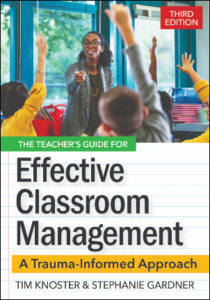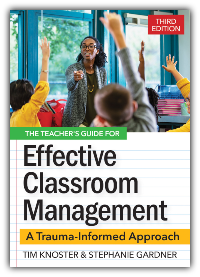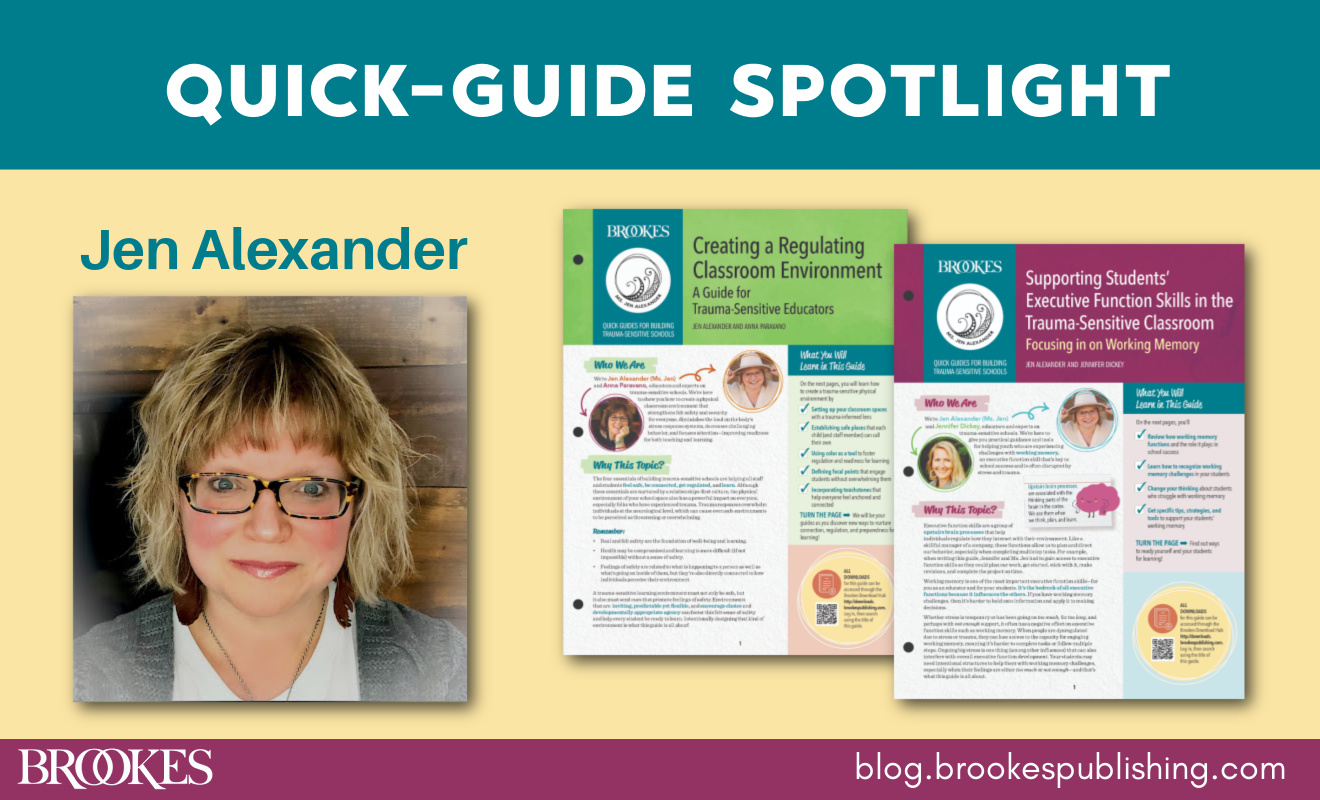8 Tips on Building Rapport with Students
April 11, 2024
Taking the time to build a strong rapport with students isn’t just a nice thing for teachers to do—it’s an essential step toward preventing challenging behavior and making sure all students are engaged and ready to learn. It’s especially important for the students in your class who have experienced trauma and continue to struggle with its aftereffects. As Tim Knoster and Stephanie Gardner note in their new book:
“Many students experiencing trauma can have difficulty not only in attempting to make sense of what they have experienced, but also in developing and sustaining relationships with others. Investing the time in showing each of your students that you care about them can have significant impacts on their emotional well-being and their engagement in school.”
 Today’s blog post, excerpted and adapted from Knoster & Gardner’s The Teacher’s Guide for Effective Classroom Management, Third Edition, offers some tips on how to build rapport and trust with all students, including those who have experienced trauma.
Today’s blog post, excerpted and adapted from Knoster & Gardner’s The Teacher’s Guide for Effective Classroom Management, Third Edition, offers some tips on how to build rapport and trust with all students, including those who have experienced trauma.
Examine your biases. You will probably begin to develop rapport and a suitably close relationship with some of your students sooner than others. This will occur naturally and not particularly consciously on your part. But if you’re not alert to your own personal biases, students who are challenging to teach may become “least favorites” or disciplinary “frequent fliers.” Additionally, students experiencing trauma may have built some unique walls as protective coping mechanisms that you will need to navigate around or over. Your instinct may be to minimize interactions with students who don’t provide you with a lot of positive reinforcement. Instead, challenge your personal biases and focus on your own self-management skills so that you act in an equitable manner.
Engage with student interests. Give serious thought to your students’ special interests in areas such as music, sports, or art. You may need to do some reconnaissance by observing the student and their interactions with others, or by asking others who know them. Think about appropriate situations conducive to conversation in which you start a brief dialogue regarding those interests. The key to starting the process of building rapport is to engage the student in a conversation about their interests within a safe/targeted situation.
Connect during noninstructional time. Your goal should be to provide students with free access to your attention—noncontingent on their academic performance and/or meeting expectations. Look for easily accessible periods within the student’s typical daily routine that would lend themselves to social interaction so that your rapport-building doesn’t depend on the student’s success with an academic task. You might make connections during homeroom or lunch, at transitions between classes, or during transitions within your classroom.
Stay alert for windows of opportunity. Your initial rapport-building interactions with any particular student shouldn’t require a great deal of time. Be alert for small windows of time to connect—30 seconds here and 30 seconds there. Making connections with a student is about small doses of highly frequent positive interactions over time.
Be open to different approaches. You can use rapport-building procedures in a number of ways, either in a one-on-one situation with a particular student or in small-group situations using other students (with whom your rapport is stable) as “social brokers” to the student you’re trying to reach. There’s no one right way to start the process. As you plan your approach, pick one you feel the most comfortable with to increase the likelihood of more consistent use. As your confidence grows, you’ll likely find yourself using a combination of these approaches.
Look for ways to connect virtually. If all or part of your schedule includes virtual instruction, you can still develop effective ways to build rapport! Use the time when students sign on to Google Meet or Zoom early or stay online after class to engage in some conversation, have open office hours, create a student survey to solicit feedback on your interactions and teaching practices, or set up individual conference times. You might send a personal message to a particular student via their LMS account to offer an opportunity for academic support or just share something about yourself. In lieu of physical gestures during class, you could send a virtual high five, a fist bump, or an emoji through the chat feature. Just as you would during in-person instruction, consider the age appropriateness and potential impact of your rapport-building efforts.
Be patient and persistent. Understand that a student with whom you are trying to connect isn’t likely to open up to you after your first attempt to break the ice. Sometimes this does happen, but that is more of an exception to the rule. It’s more likely that incrementally, over time, the student will gradually allow you to get closer to them as their comfort level with you grows. Like most relationships, the student-teacher relationship takes time to evolve, requiring patience and persistence on your part.
Give yourself grace. Don’t worry if you feel nervous or anxious when applying these steps with a student (or small number of students) with whom you are already feeling distant. You are putting yourself out there and run the risk of being rejected in a non-verbal manner or on the bad end of a sarcastic comment. It is hard work to not take student actions or reactions to your attempts to reach out too personally, and to really approach each attempt as a fresh opportunity.
Rapport-building is well worth the effort: students are more likely to stay engaged and motivated if they know you have a genuine interest in them as people. But while rapport-building procedures are important, they’re only one aspect of effective classroom management. For a more in-depth guide to the other essentials of trauma-informed classroom management, check out the book behind today’s blog post!





Write a Comment
Your email address will not be published. Required fields are marked *
Post a Comment